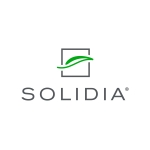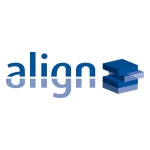First disclosure of results from primary analysis of Phase 2 PILOT study shows Breyanzi delivered complete responses in more than half of patients with refractory or relapsed large B-cell lymphoma after first-line therapy who were not deemed candidates for stem cell transplant
PILOT patient-reported outcomes analysis showed treatment with Breyanzi improved health-related quality of life measures for patients
Breyanzi is the only CAR T cell therapy that has been evaluated in two distinct trials in the second-line setting for large B-cell lymphoma, underscoring its value, if approved, as an important treatment option after failure of first-line therapy
PRINCETON, N.J. — (BUSINESS WIRE) — $bmy #ASCO—Bristol Myers Squibb (NYSE: BMY) today announced results from the primary analysis of PILOT, a multicenter, Phase 2 study evaluating Breyanzi (lisocabtagene maraleucel) in adults with refractory or relapsed large B-cell lymphoma (LBCL) after first-line therapy who were not deemed candidates for high-dose chemotherapy and hematopoietic stem cell transplant (HSCT). The PILOT study is the only company-sponsored trial to evaluate a CAR T cell therapy as a second-line treatment for patients with relapsed or refractory LBCL who are not considered candidates for stem cell transplant. The data will be presented in a poster presentation at the American Society of Clinical Oncology (ASCO) Annual Meeting on Saturday, June 4 from 9:00 AM – 12:00 PM EDT (ABSTRACT 7062).
The PILOT study enrolled a broad patient population of adults with refractory or relapsed LBCL after first-line treatment who were not considered candidates for transplant based on age, performance status and/or organ function and comorbidities, and regardless of time to relapse following first-line treatment. With a median follow-up of 12.3 months, the majority of patients treated with Breyanzi (n=61) saw a reduction in disease, with 80% of patients responding to treatment (overall response rate; 95% CI: 68.2 – 89.4) and 54% of patients achieving a complete response (CR; 95% CI:40.8-66.9). Responses with Breyanzi were durable, with a median duration of response of 12.1 months (95% CI: 6.2-NR) at 15.5 months median follow-up. In patients who achieved a CR, median duration of response was 21.7 months (95% CI: 12.7-NR). Median progression-free survival with Breyanzi was 9.0 months (95% CI: 4.2-NR), and median overall survival has not been reached (95% CI: 17.3-NR). In the PILOT study, patients were treated with Breyanzi and monitored in both the inpatient and outpatient setting.
“For patients with large B-cell lymphoma that is refractory to or relapses after first-line therapy, stem cell transplant has been the only potentially curative treatment option, but the reality is many patients are not candidates for stem cell transplant, leaving limited treatment options,” said Leo I. Gordon, M.D., study investigator, Professor in Medicine, Northwestern University Feinberg School of Medicine and the Robert H. Lurie Comprehensive Cancer Center, Chicago, Illinois. “The results from the PILOT study, including the patient-reported outcomes, show that treatment with liso-cel as a second-line therapy offers durable responses with improved quality of life for patients who historically have had poor prognosis.”
LBCL, the most common type of non-Hodgkin lymphoma, is an aggressive blood cancer and approximately 40% of patients will have disease that is refractory to or relapses after first-line treatment. High-dose chemotherapy followed by autologous stem cell transplant has been the mainstay of care in the second-line setting; however, less than half of patients with primary refractory or relapsed disease are considered candidates for a stem cell transplant. For these patients, there are limited treatments that provide long-term disease control and palliative care is often the only option. If left untreated, patients with relapsed or refractory LBCL have a life expectancy of just three to four months.
“At Bristol Myers Squibb, we strive for cure by advancing innovative therapies that may provide long-term clinical benefit for some of the most challenging cancers with the hope of creating new standards of care that not only improve outcomes but also the patient experience,” said Anne Kerber, senior vice president, Cell Therapy Development, Bristol Myers Squibb. “With Breyanzi, we have boldly designed a broad clinical trial program in relapsed or refractory LBCL, including patients who are not intended for stem cell transplant after failure of first-line therapy. These results from the PILOT study continue to demonstrate the practice-changing potential of Breyanzi in this setting, delivering on the promise of CAR T cell therapy for more patients.”
In the PILOT study, Breyanzi showed a manageable safety profile with no new safety signals and low rates of severe cytokine release syndrome (CRS) or neurologic events, and no Grade 4/5 CRS or neurologic events reported. Any grade CRS occurred in 38% of patients, with Grade 3 CRS reported in one patient (2%). Any grade neurologic events were seen in 31% of patients with Grade 3 neurologic events reported in three patients (5%).
In a separate analysis of patient-reported outcomes (PRO) from the PILOT study, patients who received Breyanzi and were evaluable for the PRO analysis (n=56) showed significant improvements in fatigue and pain. Improvements in overall lymphoma symptoms were clinically meaningful following treatment with Breyanzi, and in an individual patient-level analysis, 70% of patients reported meaningful improvements in quality of life based on FACT-LymS scores at month 6. Results from the analysis will be presented in a poster presentation on Monday, June 6 from 2:15 PM – 5:15 PM EDT (Abstract 6567).
A supplemental Biologics License Application for Breyanzi for the treatment of relapsed or refractory LBCL after failure of first-line therapy is currently under Priority Review with the U.S. Food and Drug Administration (FDA), with an assigned Prescription Drug User Fee Act (PDUFA) goal date of June 24, 2022.
Breyanzi, a differentiated CD-19 directed CAR T cell therapy, is currently approved by the FDA for the treatment of adult patients with relapsed or refractory LBCL after two or more lines of systemic therapy, including diffuse large B-cell lymphoma (DLBCL) not otherwise specified (including DLBCL arising from indolent lymphoma), high-grade B-cell lymphoma, primary mediastinal large B-cell lymphoma, and follicular lymphoma grade 3B. Breyanzi is not indicated for the treatment of patients with primary central nervous system lymphoma.
About Breyanzi
Breyanzi is a CD-19 directed chimeric antigen receptor (CAR) T cell therapy, administered as a defined composition to reduce variability of the CD8 and CD4 component dose. Breyanzi has a 4-1BB costimulatory domain which enhances the expansion and persistence of the CAR T cells. Breyanzi was previously approved by the U.S. Food and Drug Administration for the treatment of adult patients with relapsed or refractory LBCL after two or more lines of systemic therapy, including diffuse large B-cell lymphoma (DLBCL) not otherwise specified (including DLBCL arising from indolent lymphoma), high-grade B-cell lymphoma, primary mediastinal large B-cell lymphoma, and follicular lymphoma grade 3B. Breyanzi is available only through a restricted program under a Risk Evaluation and Mitigation Strategy (REMS) called the BREYANZI REMS.
Breyanzi is also approved in the European Union, Switzerland, Japan and Canada for relapsed and refractory LBCL after two or more lines of systemic therapy. Bristol Myers Squibb’s clinical development program for Breyanzi includes clinical studies in earlier lines of treatment for patients with relapsed or refractory LBCL and other types of lymphomas and leukemia. For more information, visit clinicaltrials.gov.
Breyanzi is not approved in any region for the second-line treatment of LBCL.
About PILOT
PILOT (NCT03483103) is a multicenter Phase 2 trial evaluating Breyanzi as a second-line therapy in adults with relapsed or refractory large B-cell lymphoma after first-line therapy who are ineligible for hematopoietic stem cell transplant (HSCT). All enrolled patients have relapsed or refractory large B-cell lymphoma after treatment with a single line of chemoimmunotherapy containing an anthracycline and a CD20-targeted agent and have been deemed non-candidates for high-dose chemotherapy and HSCT. The primary endpoint of the study is overall response rate. Other efficacy endpoints include complete response rate, duration of response, progression-free survival, event-free survival and overall survival.
Important Safety Information
BOXED WARNING: CYTOKINE RELEASE SYNDROME and NEUROLOGIC TOXICITIES
- Cytokine Release Syndrome (CRS), including fatal or life-threatening reactions, occurred in patients receiving BREYANZI. Do not administer BREYANZI to patients with active infection or inflammatory disorders. Treat severe or life-threatening CRS with tocilizumab with or without corticosteroids.
- Neurologic toxicities, including fatal or life-threatening reactions, occurred in patients receiving BREYANZI, including concurrently with CRS, after CRS resolution or in the absence of CRS. Monitor for neurologic events after treatment with BREYANZI. Provide supportive care and/or corticosteroids as needed.
- BREYANZI is available only through a restricted program under a Risk Evaluation and Mitigation Strategy (REMS) called the BREYANZI REMS.
Cytokine Release Syndrome (CRS)
CRS, including fatal or life-threatening reactions, occurred following treatment with BREYANZI. CRS occurred in 46% (122/268) of patients receiving BREYANZI, including ≥ Grade 3 (Lee grading system) CRS in 4% (11/268) of patients. One patient had fatal CRS and 2 had ongoing CRS at time of death. The median time to onset was 5 days (range: 1 to 15 days). CRS resolved in 119 of 122 patients (98%) with a median duration of 5 days (range: 1 to 17 days). Median duration of CRS was 5 days (range 1 to 30 days) in all patients, including those who died or had CRS ongoing at time of death.
Among patients with CRS, the most common manifestations of CRS include fever (93%), hypotension (49%), tachycardia (39%), chills (28%), and hypoxia (21%). Serious events that may be associated with CRS include cardiac arrhythmias (including atrial fibrillation and ventricular tachycardia), cardiac arrest, cardiac failure, diffuse alveolar damage, renal insufficiency, capillary leak syndrome, hypotension, hypoxia, and hemophagocytic lymphohistiocytosis/macrophage activation syndrome (HLH/MAS).
Ensure that 2 doses of tocilizumab are available prior to infusion of BREYANZI. Sixty-one of 268 (23%) patients received tocilizumab and/or a corticosteroid for CRS after infusion of BREYANZI. Twenty-seven (10%) patients received tocilizumab only, 25 (9%) received tocilizumab and a corticosteroid, and 9 (3%) received corticosteroids only.
Neurologic Toxicities
Neurologic toxicities that were fatal or life-threatening, occurred following treatment with BREYANZI. CAR T cell-associated neurologic toxicities occurred in 35% (95/268) of patients receiving BREYANZI, including ≥ Grade 3 in 12% (31/268) of patients. Three patients had fatal neurologic toxicity and 7 had ongoing neurologic toxicity at time of death. The median time to onset of the first event was 8 days (range: 1 to 46 days). The onset of all neurologic events occurred within the first 8 weeks following BREYANZI infusion. Neurologic toxicities resolved in 81 of 95 patients (85%) with a median duration of 12 days (range: 1 to 87 days). Three of four patients with ongoing neurologic toxicity at data cutoff had tremor and one subject had encephalopathy. Median duration of neurologic toxicity was 15 days (range: 1 to 785 days) in all patients, including those with ongoing neurologic events at the time of death or at data cutoff.
Seventy-eight (78) of 95 (82%) patients with neurologic toxicity experienced CRS. Neurologic toxicity overlapped with CRS in 57 patients. The onset of neurologic toxicity was after onset of CRS in 30 patients, before CRS onset in 13 patients, same day as CRS onset in 7 patients, and same day as CRS resolution in 7 patients.
Neurologic toxicity resolved in three patients before the onset of CRS. Eighteen patients experienced neurologic toxicity after resolution of CRS.
The most common neurologic toxicities included encephalopathy (24%), tremor (14%), aphasia (9%), delirium (7%), headache (7%), dizziness (6%), and ataxia (6%). Serious events including cerebral edema and seizures occurred with BREYANZI. Fatal and serious cases of leukoencephalopathy, some attributable to fludarabine, have occurred in patients treated with BREYANZI.
CRS and Neurologic Toxicities Monitoring
Monitor patients daily at a certified healthcare facility during the first week following infusion, for signs and symptoms of CRS and neurologic toxicities. Monitor patients for signs and symptoms of CRS and neurologic toxicities for at least 4 weeks after infusion; evaluate and treat promptly. Counsel patients to seek immediate medical attention should signs or symptoms of CRS or neurologic toxicity occur at any time. At the first sign of CRS, institute treatment with supportive care, tocilizumab or tocilizumab and corticosteroids as indicated.
BREYANZI REMS
Because of the risk of CRS and neurologic toxicities, BREYANZI is available only through a restricted program under a Risk Evaluation and Mitigation Strategy (REMS) called the BREYANZI REMS. The required components of the BREYANZI REMS are:
- Healthcare facilities that dispense and administer BREYANZI must be enrolled and comply with the REMS requirements.
- Certified healthcare facilities must have on-site, immediate access to tocilizumab.
- Ensure that a minimum of 2 doses of tocilizumab are available for each patient for infusion within 2 hours after BREYANZI infusion, if needed for treatment of CRS.
- Certified healthcare facilities must ensure that healthcare providers who prescribe, dispense, or administer BREYANZI are trained on the management of CRS and neurologic toxicities.
Further information is available at www.BreyanziREMS.com, or contact Bristol Myers Squibb at 1-888-423-5436.
Hypersensitivity Reactions
Allergic reactions may occur with the infusion of BREYANZI. Serious hypersensitivity reactions, including anaphylaxis, may be due to dimethyl sulfoxide (DMSO).
Serious Infections
Severe infections, including life-threatening or fatal infections, have occurred in patients after BREYANZI infusion. Infections (all grades) occurred in 45% (121/268) of patients. Grade 3 or higher infections occurred in 19% of patients. Grade 3 or higher infections with an unspecified pathogen occurred in 16% of patients, bacterial infections occurred in 5%, and viral and fungal infections occurred in 1.5% and 0.4% of patients, respectively. Monitor patients for signs and symptoms of infection before and after BREYANZI administration and treat appropriately. Administer prophylactic antimicrobials according to standard institutional guidelines.
Febrile neutropenia has been observed in 9% (24/268) of patients after BREYANZI infusion and may be concurrent with CRS. In the event of febrile neutropenia, evaluate for infection and manage with broad spectrum antibiotics, fluids, and other supportive care as medically indicated.
Avoid administration of BREYANZI in patients with clinically significant active systemic infections.
Viral reactivation: Hepatitis B virus (HBV) reactivation, in some cases resulting in fulminant hepatitis, hepatic failure, and death, can occur in patients treated with drugs directed against B cells. Ten of the 11 patients in the TRANSCEND study with a prior history of HBV were treated with concurrent antiviral suppressive therapy to prevent HBV reactivation during and after treatment with BREYANZI. Perform screening for HBV, HCV, and HIV in accordance with clinical guidelines before collection of cells for manufacturing.
Prolonged Cytopenias
Patients may exhibit cytopenias not resolved for several weeks following lymphodepleting chemotherapy and BREYANZI infusion. Grade 3 or higher cytopenias persisted at Day 29 following BREYANZI infusion in 31% (84/268) of patients, and included thrombocytopenia (26%), neutropenia (14%), and anemia (3%). Monitor complete blood counts prior to and after BREYANZI administration.
Hypogammaglobulinemia
B-cell aplasia and hypogammaglobulinemia can occur in patients receiving treatment with BREYANZI. The adverse event of hypogammaglobulinemia was reported as an adverse reaction in 14% (37/268) of patients; laboratory IgG levels fell below 500 mg/dL after infusion in 21% (56/268) of patients. Hypogammaglobulinemia, either as an adverse reaction or laboratory IgG level below 500 mg/dL after infusion, was reported in 32% (85/268) of patients. Monitor immunoglobulin levels after treatment with BREYANZI and manage using infection precautions, antibiotic prophylaxis, and immunoglobulin replacement as clinically indicated.
Live vaccines: The safety of immunization with live viral vaccines during or following BREYANZI treatment has not been studied. Vaccination with live virus vaccines is not recommended for at least 6 weeks prior to the start of lymphodepleting chemotherapy, during BREYANZI treatment, and until immune recovery following treatment with BREYANZI.
Secondary Malignancies
Patients treated with BREYANZI may develop secondary malignancies. Monitor lifelong for secondary malignancies. In the event that a secondary malignancy occurs, contact Bristol Myers Squibb at 1-888-805-4555 for reporting and to obtain instructions on collection of patient samples for testing.
Effects on Ability to Drive and Use Machines
Due to the potential for neurologic events, including altered mental status or seizures, patients receiving BREYANZI are at risk for altered or decreased consciousness or impaired coordination in the 8 weeks following BREYANZI administration. Advise patients to refrain from driving and engaging in hazardous occupations or activities, such as operating heavy or potentially dangerous machinery, during this initial period.
Adverse Reactions
Serious adverse reactions occurred in 46% of patients. The most common nonlaboratory, serious adverse reactions (> 2%) were CRS, encephalopathy, sepsis, febrile neutropenia, aphasia, pneumonia, fever, hypotension, dizziness, and delirium. Fatal adverse reactions occurred in 4% of patients.
The most common nonlaboratory adverse reactions of any grade (≥ 20%) were fatigue, CRS, musculoskeletal pain, nausea, headache, encephalopathy, infections (pathogen unspecified), decreased appetite, diarrhea, hypotension, tachycardia, dizziness, cough, constipation, abdominal pain, vomiting, and edema.
Please see full Prescribing Information, including Boxed WARNINGS and Medication Guide.
Bristol Myers Squibb: Creating a Better Future for People with Cancer
Bristol Myers Squibb is inspired by a single vision—transforming patients’ lives through science. The goal of the company’s cancer research is to deliver medicines that offer each patient a better, healthier life and to make cure a possibility. Building on a legacy across a broad range of cancers that have changed survival expectations for many, Bristol Myers Squibb researchers are exploring new frontiers in personalized medicine, and through innovative digital platforms, are turning data into insights that sharpen their focus. Deep scientific expertise, cutting-edge capabilities and discovery platforms enable the company to look at cancer from every angle. Cancer can have a relentless grasp on many parts of a patient’s life, and Bristol Myers Squibb is committed to taking actions to address all aspects of care, from diagnosis to survivorship. Because as a leader in cancer care, Bristol Myers Squibb is working to empower all people with cancer to have a better future.
Learn more about the science behind cell therapy and ongoing research at Bristol Myers Squibb here.
About Bristol Myers Squibb
Bristol Myers Squibb is a global biopharmaceutical company whose mission is to discover, develop and deliver innovative medicines that help patients prevail over serious diseases. For more information about Bristol Myers Squibb, visit us at BMS.com or follow us on LinkedIn, Twitter, YouTube, Facebook and Instagram.
Celgene and Juno Therapeutics are wholly owned subsidiaries of Bristol-Myers Squibb Company. In certain countries outside the U.S., due to local laws, Celgene and Juno Therapeutics are referred to as, Celgene, a Bristol Myers Squibb company and Juno Therapeutics, a Bristol Myers Squibb company.
Bristol Myers Squibb Cautionary Statement Regarding Forward-Looking Statements
This press release contains “forward-looking statements” within the meaning of the Private Securities Litigation Reform Act of 1995 regarding, among other things, the research, development and commercialization of pharmaceutical products. All statements that are not statements of historical facts are, or may be deemed to be, forward-looking statements. Such forward-looking statements are based on current expectations and projections about our future financial results, goals, plans and objectives and involve inherent risks, assumptions and uncertainties, including internal or external factors that could delay, divert or change any of them in the next several years, that are difficult to predict, may be beyond our control and could cause our future financial results, goals, plans and objectives to differ materially from those expressed in, or implied by, the statements. These risks, assumptions, uncertainties and other factors include, among others, that future study results will be consistent with the results to date, that Breyanzi (liso-cel) may not receive regulatory approval for the indication described in this release in the currently anticipated timeline or at all, any marketing approvals, if granted, may have significant limitations on their use, and, if approved, whether such product candidate for such indication described in this release will be commercially successful. No forward-looking statement can be guaranteed. Forward-looking statements in this press release should be evaluated together with the many risks and uncertainties that affect Bristol Myers Squibb’s business and market, particularly those identified in the cautionary statement and risk factors discussion in Bristol Myers Squibb’s Annual Report on Form 10-K for the year ended December 31, 2021, as updated by our subsequent Quarterly Reports on Form 10-Q, Current Reports on Form 8-K and other filings with the Securities and Exchange Commission. The forward-looking statements included in this document are made only as of the date of this document and except as otherwise required by applicable law, Bristol Myers Squibb undertakes no obligation to publicly update or revise any forward-looking statement, whether as a result of new information, future events, changed circumstances or otherwise.
corporatefinancial-news
Contacts
Bristol Myers Squibb
Media Inquiries:
media@bms.com
Kimberly Whitefield
Investors:
investor.relations@bms.com













